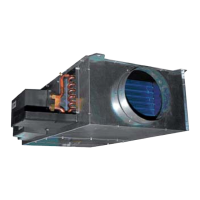Page 16
IV-CHARGING
A-Leak Testing
WARNING
Refrigerant can be harmful if it is inhaled. Refrigerant
must be used and recovered responsibly.
Failure to follow this warning may result in personal
injury or death.
WARNING
Fire, Explosion and Personal Safety hazard.
Failure to follow this warning could result in
damage, personal injury or death.
Never use oxygen to pressurize or purge
refrigeration lines. Oxygen, when exposed
to a spark or open ame, can cause re and/
or an explosion, that could result in property
damage, personal injury or death.
1 - Connect an HFC-410A manifold gauge set as
illustrated in gure 6.
2 - Open the valve on the HFC-410A cylinder (suction
only).
3 - Open the high pressure side of the manifold to allow
HFC-410A into the line set and indoor unit. Weigh in
a trace amount of HFC-410A. [A trace amount is a
maximum of two ounces (57 g) refrigerant or three
pounds (31 kPa) pressure].
4 - Close the valve on the HFC-410A cylinder and the
valve on the high pressure side of the manifold
gauge set.
5 - Disconnect the HFC-410A cylinder.
6 - Connect a cylinder of dry nitrogen with a pressure
regulating valve to the center port of the manifold
gauge set.
7 - Adjust dry nitrogen pressure to 150 psig (1034 kPa).
Open the valve on the high side of the manifold
gauge set in order to pressurize the line set and the
indoor unit.
8 - After a few minutes, open one of the service valve
ports and verify that the refrigerant added to the
system earlier is measurable with a leak detector.
NOTE - Amounts of refrigerant will vary with line lengths.
9 - Check all joints for leaks.
10 - Purge dry nitrogen and HFC-410A mixture.
11 - Correct any leaks and recheck.
12 - After leak testing, disconnect gauges from service
ports.
